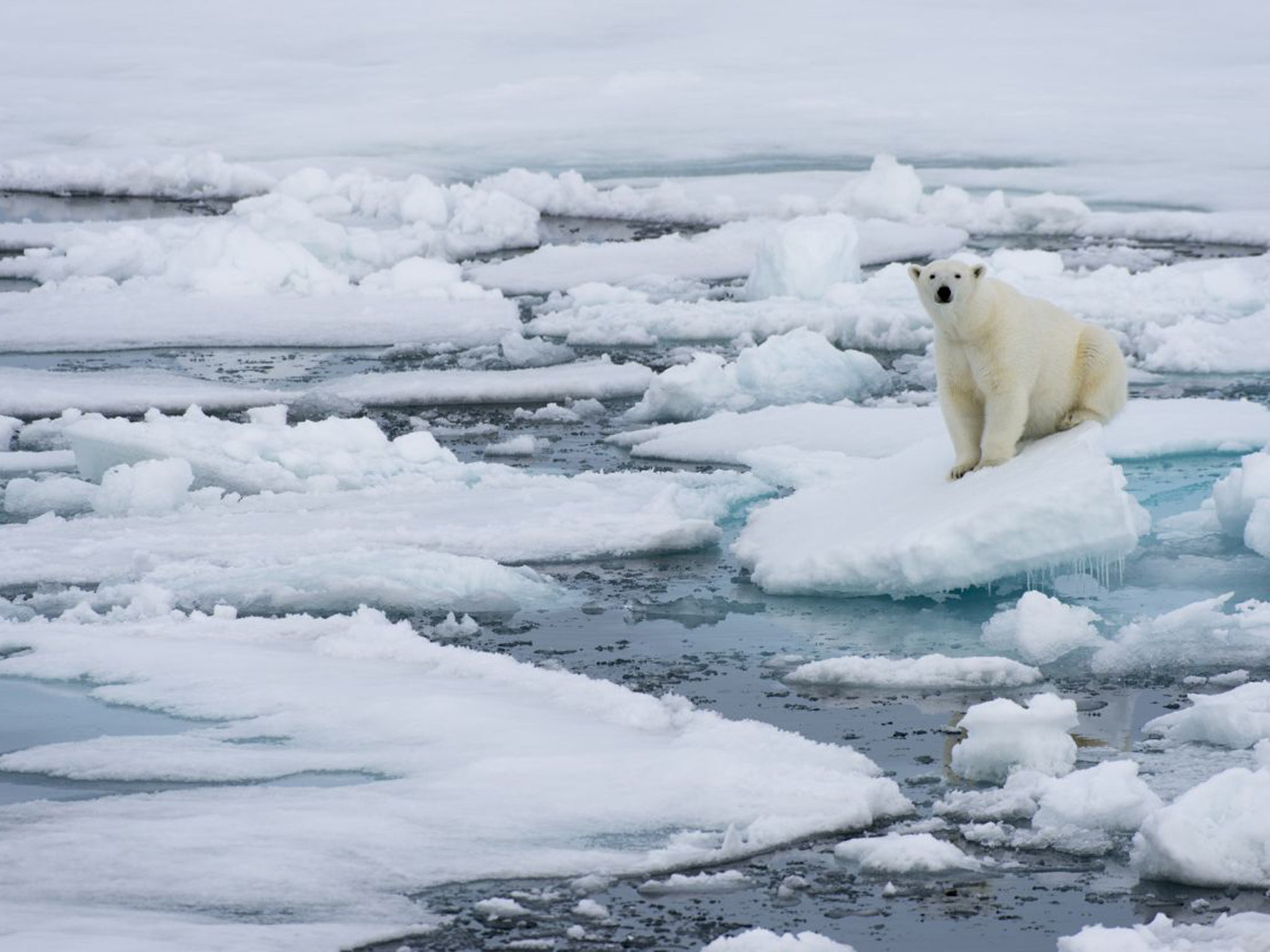Arctic circle could become completely free of sea ice even if global warming limited to two degrees Celsius
Loss of sea ice could have 'catastrophic' effects on the weather in much of the northern hemisphere and speed up global warming

Your support helps us to tell the story
From reproductive rights to climate change to Big Tech, The Independent is on the ground when the story is developing. Whether it's investigating the financials of Elon Musk's pro-Trump PAC or producing our latest documentary, 'The A Word', which shines a light on the American women fighting for reproductive rights, we know how important it is to parse out the facts from the messaging.
At such a critical moment in US history, we need reporters on the ground. Your donation allows us to keep sending journalists to speak to both sides of the story.
The Independent is trusted by Americans across the entire political spectrum. And unlike many other quality news outlets, we choose not to lock Americans out of our reporting and analysis with paywalls. We believe quality journalism should be available to everyone, paid for by those who can afford it.
Your support makes all the difference.The Arctic Ocean could become free of sea ice for the first time in 100,000 years even if action is taken to keep global warming to within two degrees Celsius, scientists have warned.
The region has experienced much sharper rises in temperature in recent decades than the rest of the world with Spitsbergen an astonishing 8C to 11C higher in winter than the average between 1961 and 1990.
And this is believed to be having a significant effect on the weather in much of the northern hemisphere, increasing the number of dangerous storms. One leading expert has warned it could have a “catastrophic” effect on the Earth’s climate.
The loss of sea ice, which reflects much of the energy from sunlight, will also increase the rate of global warming.
In a paper in the journal Nature Climate Change, Dr James Screen and Dr Daniel Williamson, of Exeter University, looked at the likelihood of the ice disappearing almost completely if temperatures rose by 1.5C or 2C.
The Paris Agreement on climate change spoke of keeping global warming below 2C and as close to 1.5C as possible – in order to avoid levels considered particularly dangerous – but the world is currently on track to hit anything from 2.6C to 3.1C by the end of the century.
The researchers wrote: “We estimate there is less than a one-in-100,000 chance of an ice-free Arctic if global warming stays below 1.5C, and around a one-in-three chance if global warming is limited to 2C.
“We suppose then that a summer ice-free Arctic is virtually certain to be avoided if the 1.5C target of the Paris Agreement is met.
“However, the 2C target may be insufficient to prevent an ice-free Arctic.”
The Arctic will be considered ice-free if it falls to below a million square kilometres. This would mean the sea around the North Pole would be clear with the remaining ice found mainly in the small islands and inlets off the north coasts of Russia and Canada, where the effect of the land, which gets colder than the sea, is more pronounced.
In September last year, Arctic sea ice fell to about 4.1 million square kilometres, the second lowest figure, compared to about 3.4 million in 2012, according to the US National Snow & Ice Data Centre.
Antarctic sea ice is currently at record low levels with 2.14 million square kilometres, compared to the average of 3.16 million between 1981 and 2010.
In December, the US National Oceanic and Atmospheric Administration (NOAA) said the situation was changing so quickly it was “outpacing our ability to understand and explain” what was happening.
They suggested the word “glacial” should not be used to mean something happening slowly but as a term for something that was “rapidly diminishing”.
Join our commenting forum
Join thought-provoking conversations, follow other Independent readers and see their replies
Comments